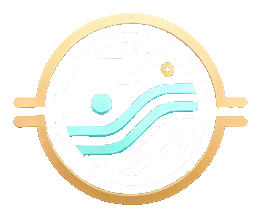Global warming is a hot topic (pun intended) in today’s environmental discussions. We are bombarded with alarming statistics about rising CO2 levels, melting ice caps, and the threat of rising sea levels. However, some theories, backed by historical climate patterns and emerging research, suggest a surprising twist: global warming could actually be a prelude to the next ice age. This might sound paradoxical, but as I’ll explain, there’s solid reasoning behind the idea. Let’s dive into the complex dynamics that could lead from global heat to a chilling future.
Global Warming’s Role in Glaciation
When we think of global warming, we picture an overheating planet—hotter summers, melting ice caps, and rising oceans. These are all valid concerns. However, Earth’s climate history suggests that periods of warming are often followed by significant cooling, leading to glacial periods, or ice ages.
How does this happen? Let’s look at the core mechanisms:
1. CO2 and the Greenhouse Effect: High levels of CO2 trap heat, leading to warmer global temperatures. However, as global temperatures rise, more water evaporates from the oceans, increasing moisture in the atmosphere.
2. Cloud Cover and Cooling: This increased atmospheric moisture can lead to more cloud formation, particularly over polar regions. Clouds are reflective, meaning they can block sunlight, cooling the surface below. As cloud cover increases, it sets the stage for snow accumulation in the polar regions, which then leads to the expansion of ice sheets.
3. Increased Albedo Effect: As ice and snow spread, they reflect even more sunlight back into space (the albedo effect), which further cools the Earth’s surface. Over time, this creates a feedback loop where cooling accelerates as more ice forms.
John D. Hamaker’s groundbreaking work in The Survival of Civilization outlines this process in detail. His thesis connects CO2 buildup with the eventual onset of glaciation, arguing that rising greenhouse gases lead to increased cloud cover over polar regions, which, in turn, initiates glaciation. This may sound counterintuitive, but the Earth’s history is littered with such cycles—periods of warmth leading into ice ages.
Anthropogenic Factors Worsening the Situation
We often talk about global warming in terms of CO2 emissions, but there are other factors at play that could accelerate or delay the onset of an ice age. Modern society, driven by technological advancements, contributes in ways that past civilizations never could. Two of the most significant contributors are electromagnetic radiation (EMR) and heat from data centers.
Electromagnetic Radiation (EMR) and Heat
In recent decades, there’s been a massive proliferation of devices that emit electromagnetic radiation: cell phones, Wi-Fi routers, 5G towers, satellite communications, and more. While the direct impact of EMR on global warming is still being researched, these devices create a secondary effect: heat. This is particularly notable in cities where urban areas, saturated with electromagnetic devices, are significantly warmer than rural surroundings, a phenomenon known as urban heat islands**.
Additionally, global data centers—responsible for running the Internet, cloud services, and digital infrastructure—consume enormous amounts of energy and release considerable heat into the environment. These data centers account for around 1% of global electricity use, and their cooling systems work hard to dissipate the heat they generate. This heat adds to the warming trend, particularly in densely populated areas where data centers are concentrated.
Feedback Loops and Cooling Mechanisms
Hamaker highlighted the critical role of **soil demineralization** in the acceleration of climate feedback loops. When soil loses minerals, plant life suffers, reducing the amount of CO2 that plants absorb. With fewer plants, atmospheric CO2 levels rise further, exacerbating the warming problem. However, when plant life declines significantly, forests die off, leaving large amounts of CO2 unabsorbed. At a certain tipping point, the increased evaporation from warming oceans leads to an overwhelming increase in moisture in the atmosphere. This additional moisture creates thick cloud cover over the poles, enhancing the cooling process that precedes glaciation.
Current Weather Patterns: Are We on the Brink of Glaciation?
Some researchers and climatologists believe we are already seeing early signs of this transition. For instance, while the Arctic is warming faster than the rest of the world, leading to the melting of sea ice, paradoxically, we are also observing increased snowfall in certain areas. The National Snow and Ice Data Center has documented this, suggesting that heightened moisture in the atmosphere is driving snowfall in polar regions.
Similarly, disruptions in ocean circulation, like the potential slowing of the Atlantic Meridional Overturning Circulation (AMOC), which plays a key role in distributing heat across the planet, could contribute to regional cooling. Europe and North America could experience harsher winters as a result, even while other regions continue to warm.
A New Prediction Model for the Next Ice Age
Building on Hamaker’s theories and integrating modern anthropogenic factors, we can refine predictions about when the next ice age might begin. Traditional models have looked at natural factors—like CO2 levels, solar radiation cycles (Milankovitch cycles), and oceanic circulation—but now we can include new parameters such as **electromagnetic radiation** and the **heat generated by data centers and urban areas**.
Here’s what this model looks like:
- CO2 Levels and Warming Feedback: High levels of CO2 drive warming and evaporation, increasing the likelihood of polar cloud formation.
- Electromagnetic Radiation and Heat: This accounts for the warmth generated by billions of devices worldwide, contributing to urban heat islands and altering local climates.
- Data Centers: The massive heat produced by global data centers, which directly contributes to local temperature anomalies, must be factored into the global warming model.
- Cooling Feedback Loops: The albedo effect, increased cloud cover, and shifts in ocean circulation patterns trigger cooling mechanisms that could accelerate glaciation.
So, When Will It Happen?
Based on these factors, the timeline for a potential ice age ranges from **200 to 1000 years**. The current warming trend, amplified by human activities, could paradoxically trigger this cooling much sooner than expected. Given the rapid pace of technological advancement and continued deforestation, we may see the first signs of a glaciation phase within **200-500 years**.
What Can We Do?
While the threat of global warming is real, the idea that it could lead to an ice age gives us a new perspective on how fragile our climate system is. To mitigate both warming and potential glaciation, we need to take immediate action on several fronts:
- Soil Remineralization: As Hamaker suggested, we must focus on replenishing our soils with essential minerals to restore plant life, which plays a crucial role in CO2 absorption.
- Reducing CO2 Emissions: While we cannot halt the natural cycles, we can significantly slow down human-induced warming by reducing reliance on fossil fuels and transitioning to renewable energy sources.
- Managing Electromagnetic Heat: Implementing more energy-efficient technology and better cooling systems for data centers can help reduce their heat output.
Conclusion
We are living in a delicate time where the forces of warming and cooling are interacting in ways that could shape the future of our planet. The idea that global warming might lead us into an ice age isn’t as far-fetched as it seems. The key to our survival lies in understanding these processes, preparing for potential outcomes, and working together to stabilize our climate for future generations.
In the words of John Hamaker, “We have everything to gain by remineralizing the soil, and everything to lose by failing to do so.” The future may be cold, but through intelligent action, we can ensure it remains hospitable.


